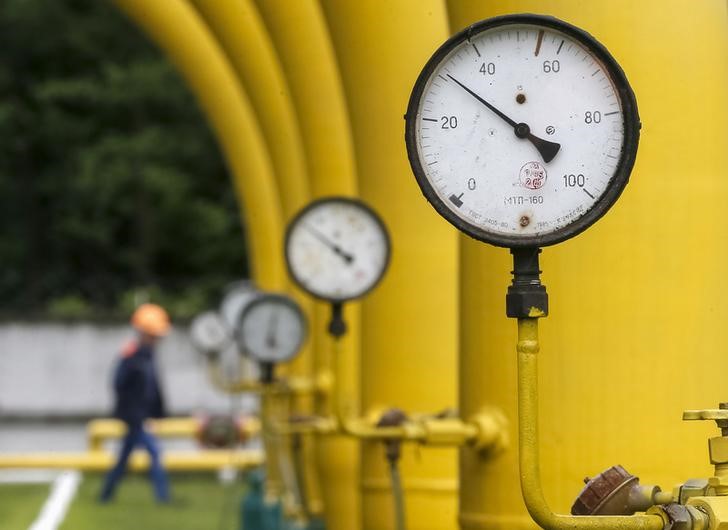Investing.com - Natural gas futures extended their rally into a third session on Wednesday, as bullish speculators continued to place bets that a return to cold winter weather will boost demand for the heating fuel.
U.S. natural gas futures surged 6.0 cents, or around 2%, to $3.189 per million British thermal units by 7:25AM ET (1225GMT). It climbed to its best level since Nov. 13 at $3.206 earlier.
Natural gas prices rallied 11.1 cents, or 3.7%, on Tuesday, the biggest daily gain since Nov. 6.
Futures are up around 9% so far this week as weather models predicted much colder weather across most parts of the continental United States starting from Dec. 6, along with areas of rain and snow. Initial forecasts called for mild weather during the period.
Natural gas futures have closely tracked weather forecasts in recent weeks, as traders try to gauge the impact of shifting outlooks on early-winter heating demand.
Prices of the fuel typically rise ahead of the winter as colder weather sparks heating demand.
The heating season from November through March is the peak demand period for U.S. gas consumption.
Meanwhile, investors looked ahead to weekly data from the U.S. on supplies in storage to gauge demand for the fuel.
The U.S. Energy Information Administration (EIA) will release its official weekly natural gas storage report for the week ended Nov. 24 at 10:30AM ET (1530GMT), amid expectations for a withdrawal of 37 billion cubic feet (bcf).
That compares with a drop of 46 bcf in the preceding week, a fall of 50 bcf a year earlier and a five-year average decline of 47 bcf.
Total natural gas in storage currently stands at 3.726 trillion cubic feet (tcf), according to the U.S. Energy Information Administration. That figure is 319 bcf, or around 7.9%, lower than levels at this time a year ago and 121 bcf, or roughly 3.2%, below the five-year average for this time of year.
Analysts estimated the amount of gas in storage would end the April-October injection season at 3.8 tcf due primarily to higher liquefied natural gas shipments abroad. That would fall short of the year-earlier record of 4.0 tcf and the five-year average of 3.9 tcf.
